I’m losing mine, but the Solar System may be way hairier than we ever thought, with thick crops of filamentary dark matter streaming through Earth’s core and back out again even as you read this.
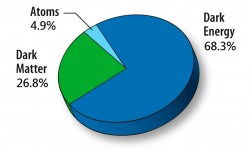
A new study publishing this week in the Astrophysical Journal by Gary Prézeau of NASA’s Jet Propulsion Laboratory proposes the existence of long filaments of dark matter, or “hairs.” Dark matter is a hypothetical form of matter that emits no light, thereby resisting our attempts to see and photograph it, but based on many observations of its gravitational pull on ordinary matter, astronomers have measured the amount of dark matter to an accuracy of 1%.
Massive amounts of it formed a tangled web of filaments after the Big Bang and ensuing epoch of cosmic inflation that served as sites for the “condensation” of bright matter galaxies. We likely owe our existence to this stuff, whatever it is, which has yet to be directly detected. Along with dark energy, it remains one of the greatest mysteries of our age.
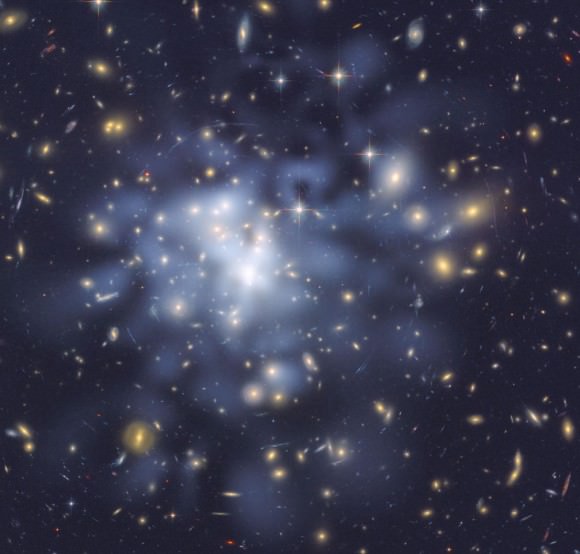
As if that weren’t enough, dark matter comprises 85% of all the known matter reserves in the universe and 27% of the entire matter-energy cosmic budget. Ordinary stuff like stars, baseball bats and sushi constitute just 4.9% of the the total. The leading theory is that dark matter is “cold,” meaning it moves slowly compared to the speed of light, and it’s “dark” because it doesn’t produce or interact with light. The axion, a hypothetical elementary particle, appears to be good candidate for dark matter as do WIMPs or weakly interacting massive particles, but again, these exist only on paper.
According to calculations done in the 1990s and simulations performed in the last decade, dark matter forms “fine-grained streams” of particles that move at the same velocity and orbit galaxies such as ours. Streams can be much larger than our Solar System and criss-cross the galaxy. Prézeau compares the formation of fine-grained streams of dark matter to mixing chocolate and vanilla ice cream. Swirl a scoop of each together a few times and you get a mixed pattern, but you can still see the individual colors.
“When gravity interacts with the cold dark matter gas during galaxy formation, all particles within a stream continue traveling at the same velocity,” Prézeau said.
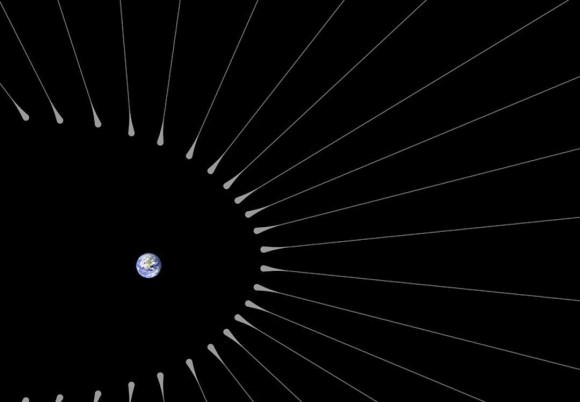
But a different scenario unfolds when a stream passes by an obstacle like the Earth or a moon. Prézeau used computer simulations to discover that when dark matter stream passes through a planet — dark matter passes right through us unlike ordinary matter — it’s focused into an ultra-dense filament or hair. Not a solo strand but a luxuriant crop bushy as a brewer’s beard.
According to Prézeau, hairs emerging from planets have both “roots,” the densest concentration of dark matter particles in the hair, and “tips,” where the hair ends. When particles of a dark matter stream pass through Earth’s core, they focus at the “root” of a hair, where the density of the particles is about a billion times more than average. The root of such a hair should be around 600,000 miles (1 million km) away from the surface, or a little more than twice as far as the moon. The stream particles that graze Earth’s surface will form the tip of the hair, about twice as far from Earth as the hair’s root.
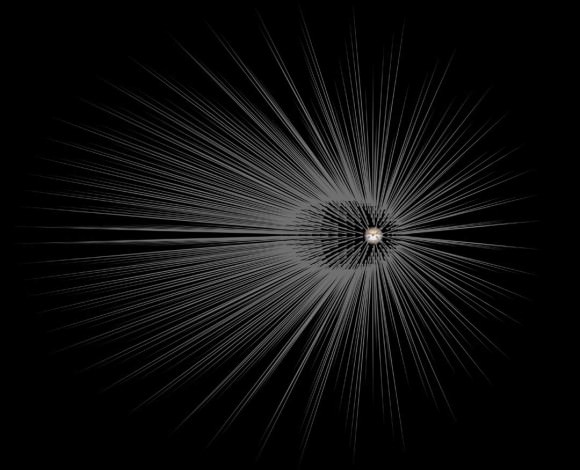
A stream passing through more massive Jupiter would have roots a trillion times denser than the original stream. Naturally, these dense concentrations would make ideal places to send a probe to study dark matter right here in the neighborhood.
The computer simulations reveal that changes in Earth’s density from inner core to outer core to mantle and crust are reflected in the shape of the hairs, showing up as “kinks” that correspond to transitions from one zone to the next. If it were possible to get our hands on this kind of information, we could use it to map to better map Earth’s interior and even the depth of oceans inside Jupiter’s moon Europa and Saturn’s Enceladus.
Earth getting its roots done. What’ll they think of next?

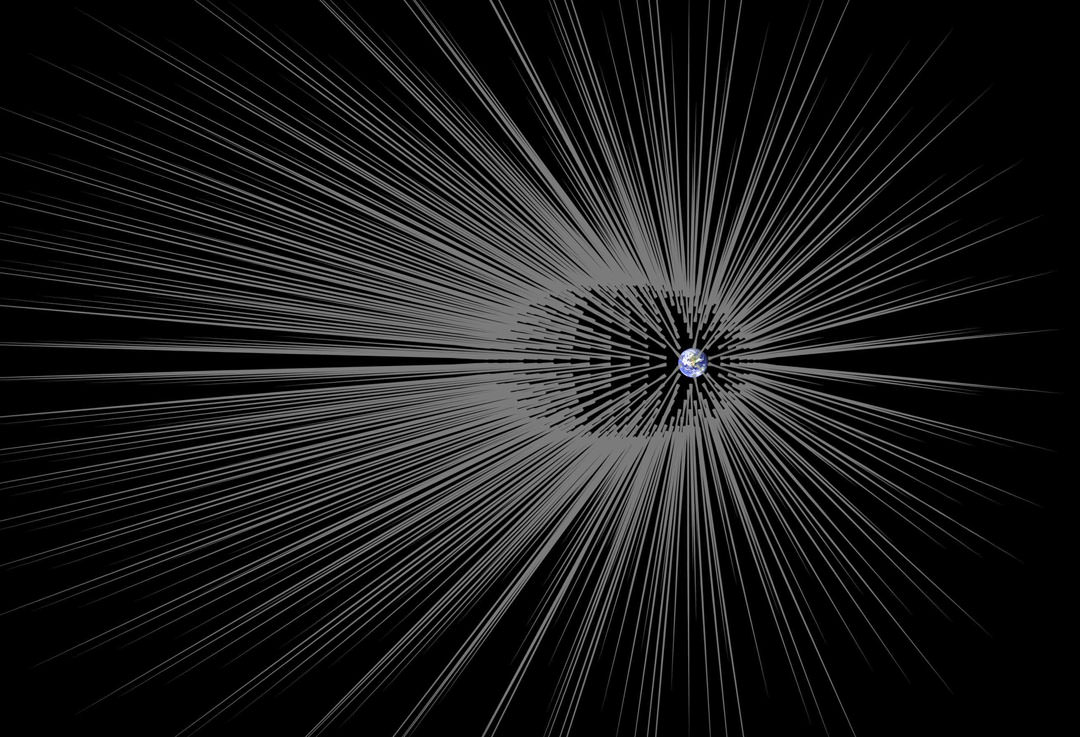
The “hair” from the sun might be a good place to look for dark matter self-annilation gama rays as thay should be even more consintrated than those generated by the planets.
Hematite,
Excellent point – I wondered the same. Might need a good heat shield that close to the sun however.
Hmm, seems farfetched to me.
Wouldn’t these dark hairs have some implications for gravitational wave searches?
Mewo,
It does, but it seems that only farfetched possibilities can account for dark matter, so in that regard, the study is right at home. I’m thinking that the density, while large from a very local point of view, is really still slight compared to the amount of material it would take to generate local gravitational waves.
Thank you Bob.
Unlike you, I might not be losing my hair anytime soon but this new study “sheds” light on them losing their dark matter 😉
BC,
I think you need to comb over to my side on this issue and explore a more layered approach. ::)
As is often the case, I am with mewo on the far fetched aspect of all this.
There must be some math underlying Prezeau’s theory but he has given neither you, Bob, nor us, any hint at all of it.
The illustration of threads radial to and with their bases some distance from Earth adds only confusion. How does that mesh with the mention of dark matter interacting with the Earth’s core?
(And, btw, the Jupiter illustration did not show up on my Chrome screen.)
Is there any other research being reported that might lend support to Prezeau? Even a little bit? (Or, pardon my cynicism, is “Prezeau” a French twist on “presumed”?)
Hi Pete,
First, thanks for the heads up on the Jupiter image. It seemed to work only intermittently. I’ve replaced with a new version, so you should see it now. If not, let me know. I just finished a book on dark matter and all the different detection methods underway and saw no mention of Prezeau, so I presume his research is fairly new, cutting edge. He’s got a PhD in theoretical physics among other qualifications (I added a link).
According to his computer simulations dark matter concentrates in the roots AWAY from the Earth, hence the reason to illustrate them that way.
Thanks, Bob.
But again, please forgive me my cynicism. Prezeau’s work being new does not make it “cutting edge”. It’s merely perhaps from a new perspective.
No doubt though that he has raised more questions than he has answered, and that is often the case with new insight.
Pete,
Agreed. That’s what so enjoyable and maddening about scientific inquiry. For a time, we’re led to believe what sounds preposterous. And true, some of those notions have later been proven false, but occasionally they’re true.
Bob you are great at getting us all to give our own point of views across I personally believe that Dark Matter in fact does Not exist and what is perceived as Dark Matter is indeed billions of tiny Black Holes spread throughout the Cosmos….
Tiny black holes are hot, though. Hawking radiation and all that.
UFOs,
Ever time I hear about new things found in space I wonder if they might go toward solving the dark matter problem. Recently, a bounty of low surface brightness satellite galaxies were discovered in the nearby Fornax Cluster. I thought: maybe this could take us partway to explaining all the extra unseen mass in the universe. Assuming every galaxy cluster is filled with the same with larger clusters containing exponentially more dwarfs, would it make a difference? Probably not, given the overwhelming amount of mass required to explain galaxy rotation curves and the like. Still hopeful for a real matter solution, but willing to “go dark” when that day comes!
From my perspective, we have a very poor understanding of quantum mechanics.
The symptoms we see are probably due to some quantum particle or effect we have not discovered.
We have essentially almost no understanding of the first six dimensions.
We have some understanding of dimension number 7, Time.
We have a fairly good understanding of dimensions 8, 9, and 10. The orthogonals commonly designated by X, Y, and Z.
More research in this area, or in the CERN project colliding anti-protons to look for anti-gravitons may give us a lead where to look for the answer.
Remember, there is a large imbalance between matter and antimatter in our part of the universe that we can not explain.
I am sure this Prezeau is a smart guy. As pointed out by other posters, I wish we could have an ELI5 on how something that is not supposed to interact with normal matter can be influenced by Earth’s (or other planet/star’s) gravity??
Clutching at straws I will go out on a limb and guess maybe it could be something to do with SpaceTime dilation/aberation (ie the disturbance in the S/T fabric caused by a massive objects gravity well) .. But this surely would still imply something following mass influence of gravitational constraints??
May I ask, What is the difference between dark matter and gravity; they seem to have all the same properties of not being able to be seen. And the filaments also center around bodies of mass.
Hi Mich48,
Gravity is a field like an electric field or a magnetic field; these fields do not have filaments, they are contiguous.
Dark matter is not contiguous, and the gravity field emanating from dark matter implies that there are gravitons in whatever dark matter is.
Do not confuse filaments with the gravity waves that occur when two black holes or neutron stars orbit each other,
and cause severe distortions to the fabric of space-time, they are two different things.
Hi weeasle,
You may be on the right track.
The standard model of quantum mechanics requires 10 dimensions to work.
The distortions to space-time observed could be caused by several things.
In my opinion, the worst case would be, dark matter occupies dimensions 2,5,7,and 8.
This would produce an invisible “semi-parallel universe” that had “gravity effects” (space-time aberrations) that we would detect.
I do not think this is the case, but the example shows the large number of possibilities facing physicists.